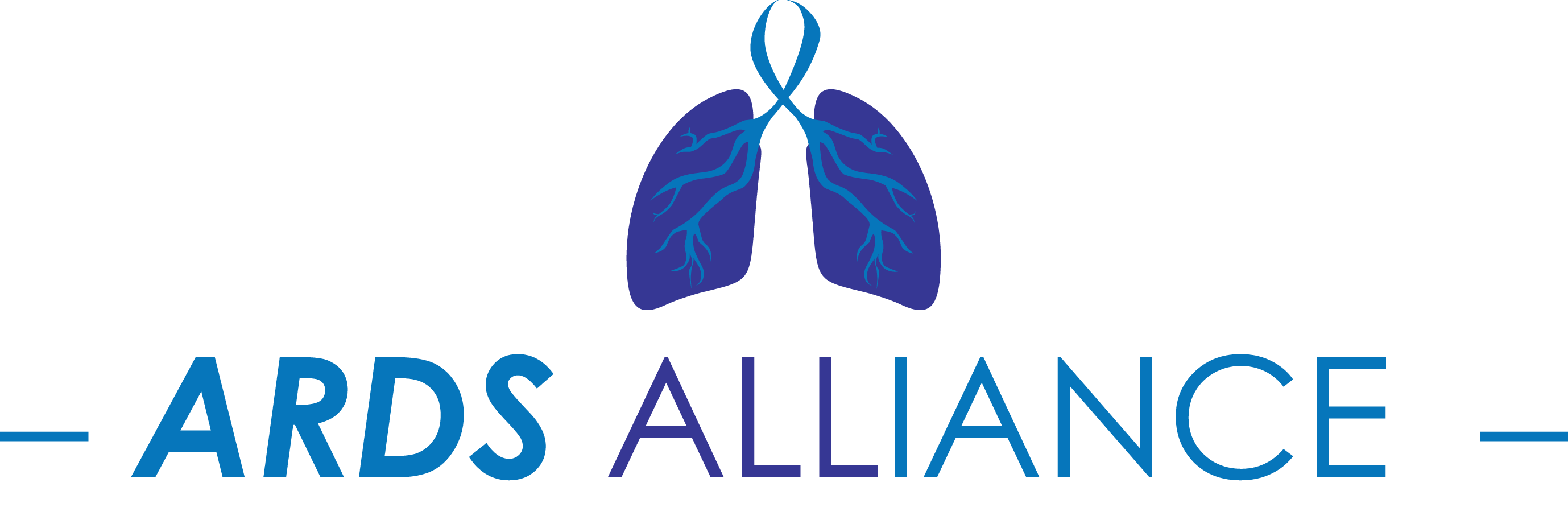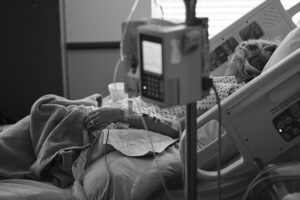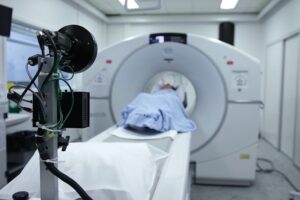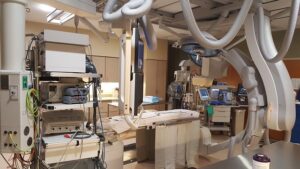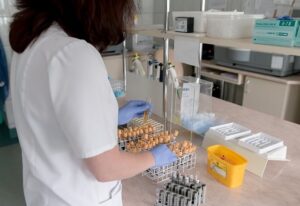Understanding ARDS in Newborns: Causes and Complications
Understanding ARDS in Newborns: Causes and Complications
Acute Respiratory Distress Syndrome (ARDS) is a serious condition that can affect newborns, leading to significant health challenges. The complex nature of ARDS can be particularly alarming for parents and caregivers, as its symptoms can escalate quickly and may require immediate medical intervention. Understanding ARDS, its causes, symptoms, and potential complications can help demystify the condition, enabling caregivers to make informed decisions about their newborn’s health. In this article, we will delve deep into the topic, providing a comprehensive overview that includes the definitions, causes, symptoms, treatments, complications, and frequently asked questions.
What is ARDS?
Acute Respiratory Distress Syndrome is defined as a severe inflammatory response in the lungs that results in pulmonary edema (fluid accumulation in the lungs), atelectasis (collapse of lung tissue), and impaired gas exchange. In newborns, ARDS can manifest as a result of numerous underlying conditions, making it a critical issue that requires an understanding of its etiology.
ARDS is characterized by a rapid onset of difficulty breathing, often within a few hours of the identifiable cause. Newborns can develop symptoms that include rapid breathing (tachypnea), grunting sounds during exhalation, retractions (pulling in of the chest wall), and cyanosis (bluish discoloration of the skin). Prompt diagnosis and treatment are crucial to improve outcomes.
- ARDS can occur in infants born prematurely.
- It has a high mortality rate without proper intervention.
- Early detection is paramount for successful treatment.
Causes of ARDS in Newborns
The causes of ARDS in newborns can range from direct lung injury to systemic factors that compromise the lungs’ function. Various factors may precipitate the onset of ARDS:
1. **Infection:** Pneumonia, sepsis, or other infections can trigger ARDS in newborns. The inflammatory response to these infections can lead to fluid leaking into the air sacs of the lungs.
2. **Meconium Aspiration:** This occurs when a newborn inhales a mixture of meconium (the first feces) and amniotic fluid into the lungs before or during delivery. The inhaled meconium can cause inflammation and obstruct airways, increasing the likelihood of developing ARDS.
3. **Prematurity:** Newborns born prematurely may not have fully developed lungs, which can predispose them to ARDS or similar lung issues. Premature infants are often at higher risk for complications such as Respiratory Distress Syndrome (RDS), which can proceed into ARDS.
4. **Maternal Factors:** Conditions during pregnancy, such as diabetes, hypertension, or infections, can affect the health of the newborn and contribute to lung conditions like ARDS.
5. **Genetic Factors:** Some genetic conditions may predispose newborns to respiratory issues, including ARDS. Research is ongoing in this area to identify specific genetic markers.
- Infections such as pneumonia and sepsis are common triggers.
- Meconium aspiration can lead to significant respiratory complications.
- Premature infants have a higher rate of ARDS due to underdeveloped lungs.
- Maternal health and conditions can also influence the risk.
Symptoms of ARDS in Newborns
The symptoms of ARDS can vary but typically appear within hours of the triggering event. Awareness of these symptoms is important because they require immediate medical attention. Common symptoms include:
1. **Increased Breathing Rate:** Noticeably rapid breathing (tachypnea) is often the first sign and can be accompanied by difficulty breathing.
2. **Grunting Sounds:** Newborns may make grunting noises during exhalation as they attempt to keep air in their lungs and maintain oxygen levels.
3. **Retractions:** This refers to the visible sinking in of the chest area (above, between, or below the ribs) as a baby struggles to take in air.
4. **Cyanosis:** A bluish tint to the skin, particularly around the lips and fingertips, indicates insufficient oxygen and is a serious symptom requiring urgent attention.
5. **Lethargy and Weakness:** Newborns with ARDS may appear unusually tired and have decreased responsiveness or weak reflexes.
- Be alert for rapid breathing or grunting sounds.
- Watch for any signs of cyanosis or difficulty maintaining oxygenation.
- Monitor for lethargy or a lack of responsiveness.
Diagnosis of ARDS
Diagnosing ARDS typically requires a combination of clinical assessment, imaging studies, and laboratory tests. The medical team will conduct a thorough evaluation that may include:
1. **Physical Examination:** Doctors will assess the newborn’s breathing pattern, color, and overall responsiveness.
2. **Chest X-ray:** This imaging study can help visualize fluid accumulation in the lungs and identify any other potential complications like a collapsed lung.
3. **Blood Tests:** Blood oxygen levels may be measured, alongside tests to check for infection or other underlying conditions.
4. **Pulse Oximetry:** A non-invasive device will be used to measure the oxygen saturation in the blood, ensuring that the infant is receiving adequate oxygen levels.
The diagnosis of ARDS may be made using the Berlin Definition, which classifies ARDS into three categories based on the degree of hypoxemia and timing of occurrence:
- Mild ARDS: 200 mmHg < PaO2/FiO2 ≤ 300 mmHg
- Moderate ARDS: 100 mmHg < PaO2/FiO2 ≤ 200 mmHg
- Severe ARDS: PaO2/FiO2 ≤ 100 mmHg
Treatment Options for ARDS in Newborns
Treatment for ARDS in newborns often requires a multidisciplinary approach and can vary depending on the underlying cause and the severity of the condition. Some of the more common treatment modalities include:
1. **Oxygen Therapy:** Increasing the oxygen supply is a priority in managing ARDS. This may involve the use of supplemental oxygen delivered via nasal cannula, face mask, or mechanical ventilation in severe cases.
2. **Mechanical Ventilation:** If the newborn is unable to breathe effectively on their own, the use of a ventilator may be necessary. Positive pressure ventilation can help improve oxygenation and relieve respiratory distress.
3. **Continuous Positive Airway Pressure (CPAP):** This non-invasive method helps keep the airways open and prevents atelectasis by maintaining a continuous positive pressure in the airways.
4. **Pharmacological Interventions:** Depending on the underlying cause, antibiotics, corticosteroids, and other medications may be prescribed to reduce inflammation or manage infection.
5. **Supportive Care:** Care extends to providing thermoregulation, hydration, and nutrition as needed. Attention to the infant’s overall environment and comfort is also important.
- Oxygen therapy is critical for improving oxygen levels.
- Mechanical ventilation might be necessary to support breathing.
- Medications can help manage underlying causes.
- Continuous monitoring and supportive care are essential for recovery.
Complications of ARDS in Newborns
ARDS can lead to several complications, some of which can be quite serious. Understanding these potential outcomes is vital for caregivers. Common complications include:
1. **Lung Injury:** Prolonged ARDS can cause lung damage, making future respiratory issues more likely. This may lead to chronic lung disease and require ongoing medical follow-up.
2. **Multi-Organ Dysfunction:** Severe hypoxemia and related complications can affect multiple organ systems, risking the health of the heart, kidneys, and brain.
3. **Infection:** Infants undergoing mechanical ventilation or prolonged hospital stays are at increased risk for secondary infections, such as ventilator-associated pneumonia.
4. **Nutritional Deficiencies:** Due to the severity of the illness, some infants may struggle with feeding, leading to potential malnutrition, which can complicate recovery.
5. **Psychosocial Impacts:** The stress of dealing with ARDS can affect the emotional well-being of the family, and mental health support may be necessary for both caregivers and the infant as they grow.
- Lung injury can lead to chronic respiratory issues.
- Multi-organ dysfunction increases morbidity and complicates recovery.
- Secondary infections are a significant risk during hospitalization.
- Ongoing nutritional support may be essential for recovery.
Long-Term Outlook and Support for Families
The long-term prognosis for infants who experience ARDS can vary significantly based on the underlying causes, severity of the condition, and timeliness of intervention. Many infants recover fully, but some may face challenges such as recurrent respiratory issues or developmental delays.
For families going through this experience, support is critical. Resources include:
- Support Groups: Connecting with other families who have experienced similar situations can provide emotional support and practical advice.
- Health Care Providers: Keeping open lines of communication with pediatricians and specialists can ensure that necessary follow-up care is met.
- Educational Resources: Seek out literature and online resources related to ARDS and neonatal care to empower your understanding and approach.
- Mental Health Services: Consider counseling for both parents and siblings to address the emotional toll of a neonatal health crisis.
Frequently Asked Questions (FAQs)
What is the prognosis for newborns with ARDS?
The prognosis varies. Factors such as the cause, severity, and timing of treatment impact recovery. Many newborns do well and recover fully, but some may face long-term respiratory issues.
Can ARDS be prevented in newborns?
While not all cases of ARDS are preventable, certain measures can reduce risks, such as proper prenatal care, managing maternal health conditions, and ensuring safe delivery practices.
How is ARDS different from RDS?
Respiratory Distress Syndrome (RDS) is primarily seen in premature infants due to a lack of surfactant, while ARDS can occur in otherwise healthy newborns due to various stressors such as infection or meconium aspiration.
Are there long-term effects of ARDS?
Some infants may experience chronic lung issues or developmental delays. Monitoring and early intervention for any health concerns are essential for optimizing outcomes.
References
1. “ARDS: Acute Respiratory Distress Syndrome.” National Heart, Lung, and Blood Institute. NHLBI.
2. “Meconium Aspiration Syndrome.” American Academy of Pediatrics. AAP.
3. “Neonatal Lung Injury.” Medscape. Medscape.
4. “Understanding ARDS in Infants.” Mayo Clinic. Mayo Clinic.
5. “Supporting Families of Neonates in the NICU.” Journal of Neonatal Nursing. Journal of Neonatal Nursing.
By understanding ARDS in newborns, caregivers can feel better equipped to handle the challenges presented by this complex condition. Remember, early recognition and intervention are critical to improving outcomes for your little one.
About ARDS and Post-ARDS
ARDS (Acute Respiratory Distress Syndrome) is a life-threatening condition typically treated in an Intensive Care Unit (ICU). While ARDS itself is addressed during the ICU stay, recovery doesn’t end with discharge; patients then embark on a journey of healing from the effects of having had ARDS.
Disclaimer
The information provided in ARDS Alliance articles is for general informational and educational purposes only and is not a substitute for professional medical advice, diagnosis, or treatment. While we strive to present accurate, current information, the field of Acute Respiratory Distress Syndrome (ARDS) and related healthcare practices evolve rapidly, and ARDS Alliance makes no guarantee regarding the completeness, reliability, or suitability of the content.
Always seek the advice of qualified healthcare professionals with any questions you may have regarding a medical condition. Never disregard professional medical advice or delay seeking it because of information you read in ARDS Alliance articles. ARDS Alliance, its authors, contributors, and partners are not liable for any decision made or action taken based on the information provided in these articles.
About ARDS Alliance
Our mission is to improve the quality of life for ALL those affected by ARDS.
The ARDS Alliance is a non-profit committed to raising awareness and enhancing the understanding of Acute Respiratory Distress Syndrome (ARDS), a severe lung condition often occurring in critically ill patients. Through developing alliances, it unites various organizations and experts striving to improve care and support research aimed at finding more effective treatments. Their efforts include educating the public and healthcare providers about ARDS symptoms, risk factors, and advancements in treatment, ensuring better patient outcomes and resource availability.

“As the President of ARDS Alliance, I am dedicated to improving the lives of patients suffering from acute respiratory distress syndrome. Through our advocacy efforts and partnerships with medical professionals, we strive to raise awareness and support research for better treatment options. Together, we can make a difference in the fight against ARDS.”
~ Paula Blonski
President, ARDS Alliance
